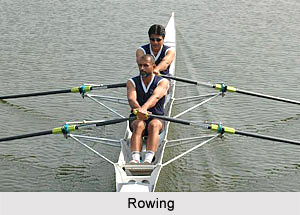 1. The game is an infringement-less game to a very large extent. Main rules are about fouling and interference. The crew may be disqualified for touching the other boat`s crew when they are out of their lane. Same goes for washing the other boat either by cutting through their path; or with "puddles" which are the swirls of water left by the blades after a stroke. A crew may be disqualified for merely obstructing the other boat. Touch is not necessary. However the ruling of umpire would be final.
1. The game is an infringement-less game to a very large extent. Main rules are about fouling and interference. The crew may be disqualified for touching the other boat`s crew when they are out of their lane. Same goes for washing the other boat either by cutting through their path; or with "puddles" which are the swirls of water left by the blades after a stroke. A crew may be disqualified for merely obstructing the other boat. Touch is not necessary. However the ruling of umpire would be final.
2. At the beginning of the race, the boats line-up with their bows (fronts) on the starting line and the starter says (Are you ready?) and then (go). The first boat to complete the race is the winner.
3. The weight restriction for coxes is 40 kg for juniors and 50 kg for seniors. Coxes below this limit are required to carry weight in the boat.
4. Weight of the crew: The crew are divided in open and light weight class. For lightweight class the following rules apply:
(a) The average weight of all the crew members should not exceed 70 kg.
(b) No crew member should be more than 72.5 kg.
5. International championships are held in inland waters covering a distance of 2000 m for men/women, 1500 m for juniors.
6. All championships are held in six lane courses based on availability of course but the minimum number of lanes required to conduct an international regatta and FISA rules is four
This article is a stub. You can enrich by adding more information to it. Send your Write Up to content@indianetzone.com




